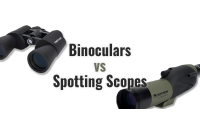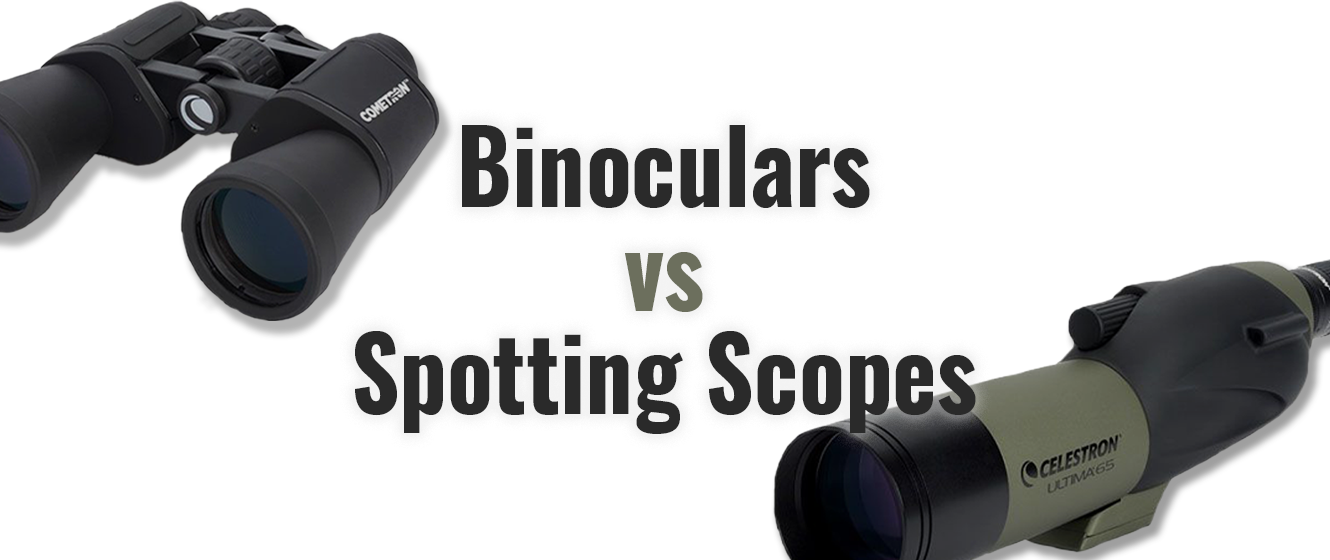
If you’re a birder, the chances are you’ve seen and/or used both binoculars and spotting scopes before. Maybe you already own a few of each and are wondering which is best for looking at the stars. Alternatively, you may be an amateur astronomer considering buying a spotting scope for both astronomy and daytime use. There are pros and cons to both, but when it comes to astronomy, is one any better than the other?
What is a Spotting Scope Used For?
Spotting scopes are often used by birders and hunters as they can provide a high-quality, close-up view of distant targets, such as birds and wildlife. They’re also great for enjoying the scenery or the view of the ocean from a window or balcony.
While being a great choice for daytime activities, a spotting scope can also be used for astronomy. Some amateur astronomers use spotting scopes as an alternative to both binoculars and telescopes, but if the primary telescope is large enough, a spotting scope can also be attached to the side and used as an alternative to a finderscope.
So is a spotting scope simply a smaller version of a telescope, or can it truly be used as a serious tool for astronomy?
What Do Binoculars and Spotting Scopes Have in Common?
Perhaps one of the best things about both binoculars and spotting scopes is that, unlike most regular telescopes, they can both be used for daytime activities. A telescope usually isn’t a good choice for this, as it will invert the view through the eyepiece.
Binoculars and spotting scopes have an additional lens to correct the image, and while this means a slight drop in quality, the degradation is minimal and shouldn’t have a large impact during use.
Telescopes lack this additional lens, and while you can buy an adapter that will correct the image, it’s not the most ideal solution. That’s because both spotting scopes and binoculars have one other feature in common that’s lacking from most telescopes: portability.
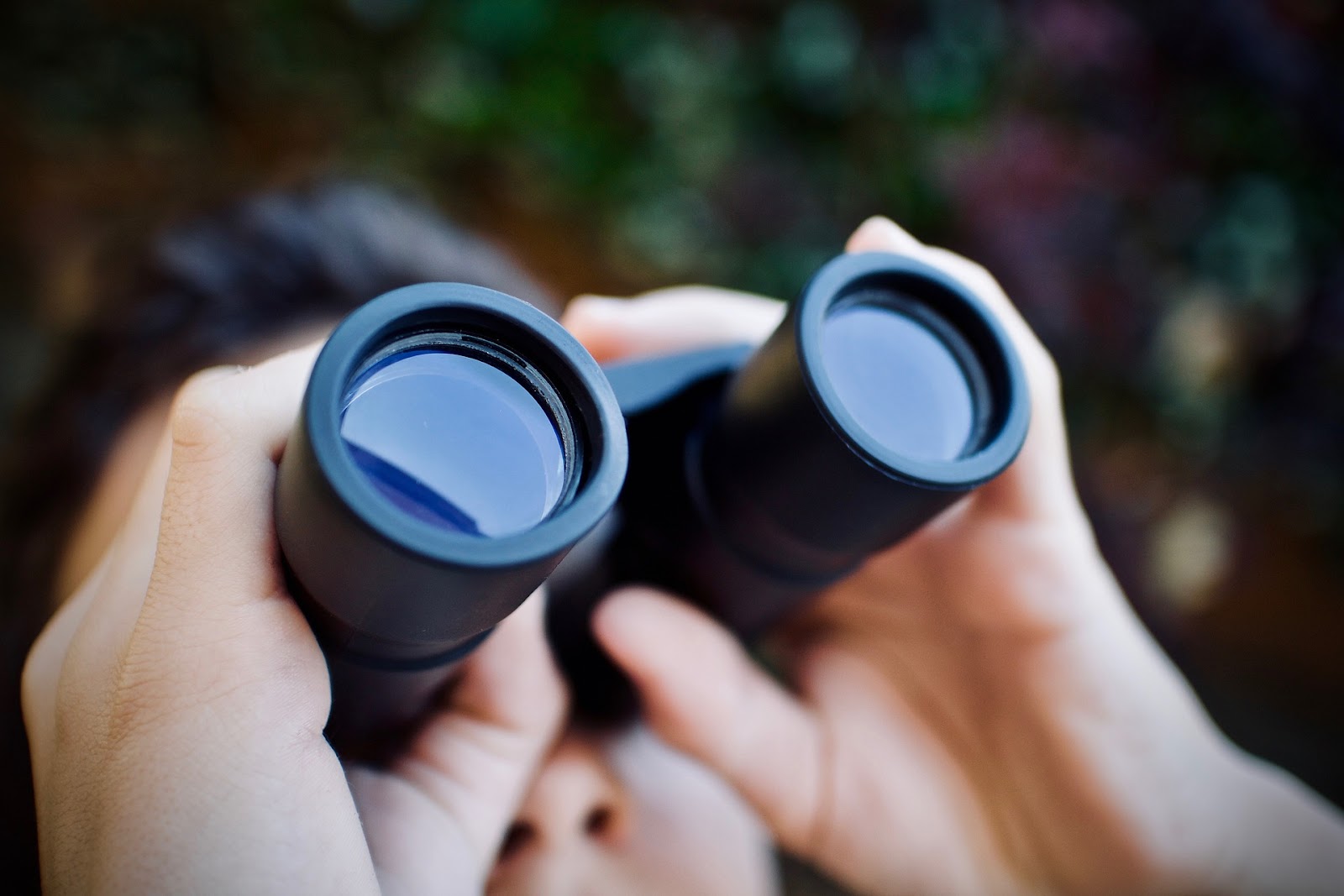
Simply put, you can take your binoculars or a spotting scope almost anywhere. Most binoculars are light enough to be carried or worn around your neck while spotting scopes are typically small enough to be transported in a carry case.
And while it’s not true for every binocular or spotting scope, you’ll often find that they’re built to be both waterproof (or at least water-resistant) and have optics that have been treated to prevent fogging. This makes them both highly versatile observing tools, as they can be taken outside and used in almost any kind of weather.
What Are the Differences Between a Spotting Scope and Binoculars?
As it happens, there are a lot of differences between the two, so let’s start with the most obvious: being a type of telescope, a spotting scope has a single objective lens and a single eyepiece, whereas a binocular has two of each. Which, of course, is why it’s called a binocular in the first place!
Another big difference is that spotting scopes require a tripod, as it can be difficult and cumbersome to hold the scope up to your eyes. Conversely, most binoculars don’t require a tripod as they’re designed to be light enough to be held up to your eyes for a short period of time.
The exception here is with larger binoculars - typically those with objective lenses of 70mm or larger. While it’s possible to hold these up to your eyes for just a few moments, continued use can be uncomfortable and cause arm fatigue.
Related to this, the majority of spotting scopes have eyepieces that are angled, which makes it easier to look through the eyepiece when the scope is pointed up toward the sky. Alternatively, a straight scope (for example, the Celestron Ultima 65mm 18-55X Straight Spotting Scope) is built like one half of a binocular, with an eyepiece that isn’t angled and that looks straight through the barrel of the scope instead.
A straight scope (and most binoculars, for that matter) can be attached to a regular tripod, but two problems then arise when you try to look at an object that’s high overhead.
Firstly, the tripod mount probably won’t be capable of tilting upwards to that degree. Secondly, even for targets closer to the horizon, it can be difficult (and uncomfortable) trying to look through the eyepiece as you’ll need to contort your body to do it. You can buy binoculars with angled eyepieces, but these are typically a lot more expensive than regular binoculars.
Another issue with hand-held binoculars is that they can be prone to shaking. Generally speaking, the larger the objective lenses on a binocular, the heavier the binocular will be, and the higher the magnification, the more the view will shake.
One way to solve the tripod tilt problem and the shaking issue is to use a parallelogram-style mount for your binoculars. By attaching the mount to your tripod, you can then angle your binoculars up towards targets that are passing overhead in the sky.
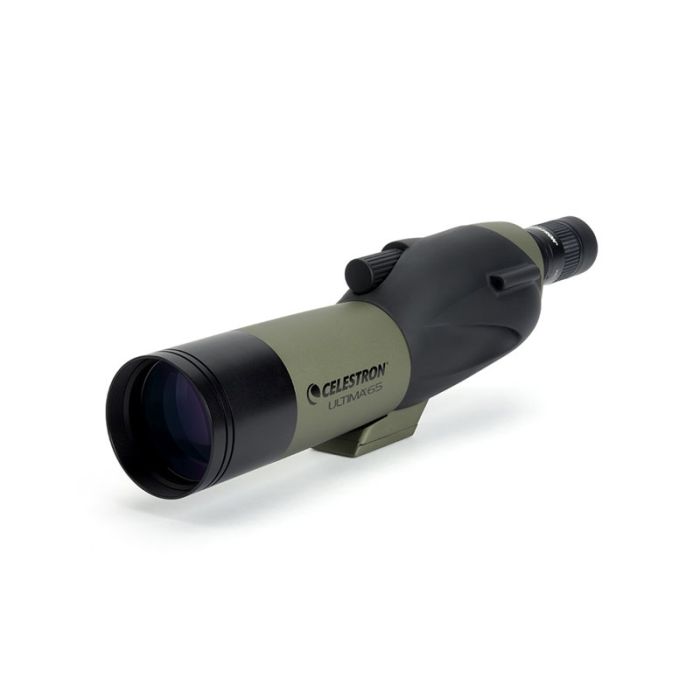
Pictured above: Celestron Ultima 65mm 18-55X Straight Spotting Scope
Despite this, binoculars have one clear advantage over spotting scopes: they’re more easily relocated. Specifically, if you’re not using a tripod, you don’t need a flat surface. And while you can transport your spotting scope in a carry case, you can walk with binoculars around your neck and keep both hands free.
In short, you can stop anywhere, at a moment’s notice, and immediately use your binoculars, rather than trying to find a suitable spot for your scope and then quickly setting it up.
What about magnification? Is one any better than the other? The short answer is yes, a spotting scope is a clear winner here. Whereas binoculars will max out at around 25x, spotting scopes can typically go up to around 60x or 70x.
More than this, spotting scopes typically have variable magnifications that will allow you to zoom in on your target. Most binoculars have fixed magnifications, and while there are some that have zoom capability, they’re typically not as good quality as their fixed-magnification counterparts.
Some spotting scopes will also allow for different eyepieces to be used, whereas, of course, the eyepieces on a binocular cannot be changed.
There are other factors that may (or may not) affect your decision:
- Binoculars have a nearer close focus. In other words, they can focus on objects that are closer to you. While this might not be an issue for astronomy, if you’re a birder, this could be important.
- Binoculars typically have a slightly wider angular field of view, so if you appreciate the aesthetics that come with seeing more, you might prefer to observe through binoculars.
- Although both binoculars and spotting scopes are available in a range of sizes, on average spotting scopes have a slightly larger aperture. For example, many folks like to use binoculars with apertures of 50mm or 70mm for astronomy, but it’s not uncommon for spotting scopes to have apertures ranging from 60mm to 100mm.
- A spotting scope can utilize a cover to protect it from the elements, allowing it to be used even during inclement weather. While not necessarily a factor for astronomy, this could be important if you want to use your scope during the day.
- Lastly, spotting scopes are generally more expensive than binoculars. For example, at the time of writing, the average price of a spotting scope is $380, whereas the average price of a traditional Porro prism binocular is $196.
Binoculars vs Spotting Scopes - Which One is Best for Astronomy?
As with almost everything else, there’s no clear-cut answer to this question, as it really depends upon what you want to use it for. Firstly, obviously, both can be used for daytime activities and potentially in a variety of weather conditions, so either one could be considered for birding and hunting, as well as astronomy.
In terms of astronomical targets, a spotting scope will outperform binoculars almost every time, as it has a larger aperture, greater magnification, and the angled eyepiece and tripod make it easier to use.
The deciding factor may be your budget, as a spotting scope will hit your wallet harder. With that in mind, consider these last two factors:
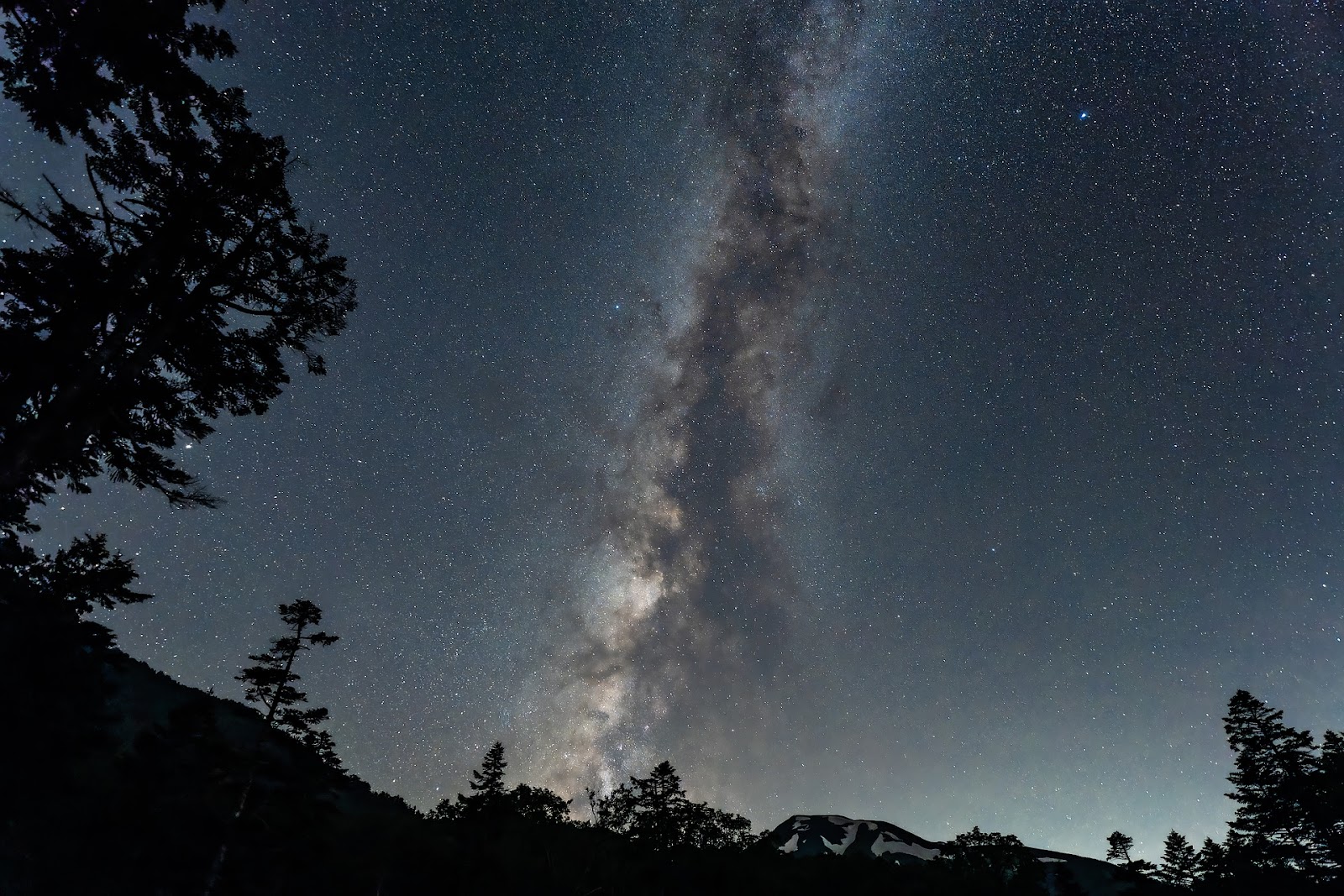
If you’re looking for something you can take anywhere at any time and use at a moment’s notice, then binoculars are probably best for you.
If, on the other hand, you intend to stop somewhere (for example, a camping ground, the beach, or a scenic observation point on a hiking trail) then a spotting scope might be the better option.
This Article was Last Updated on 07/11/2023

Questions? Contact Us!
Still not sure which is best for you? Send a message to our non-commissioned product advisors! Our team of telescope experts are happy to point you in the right direction.





